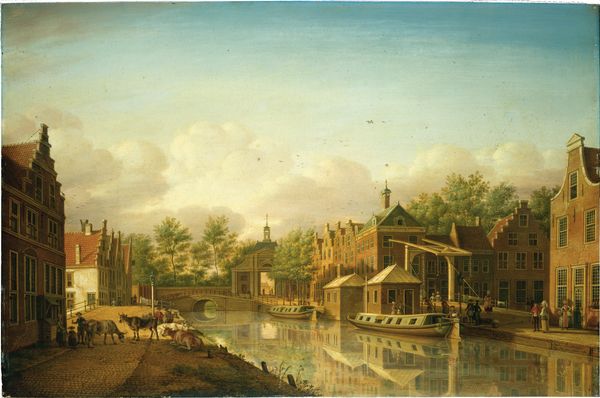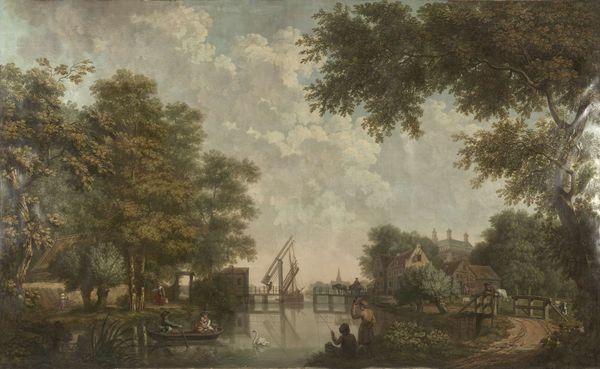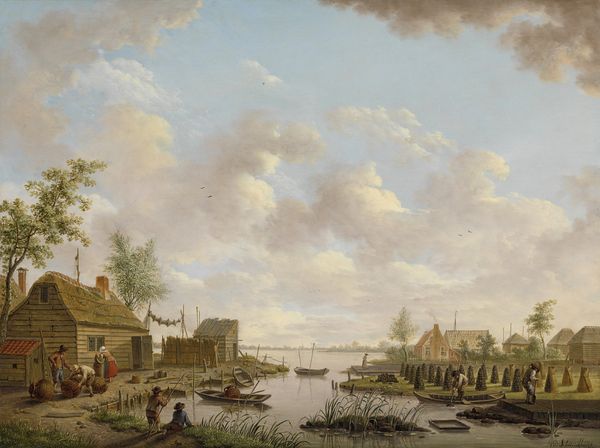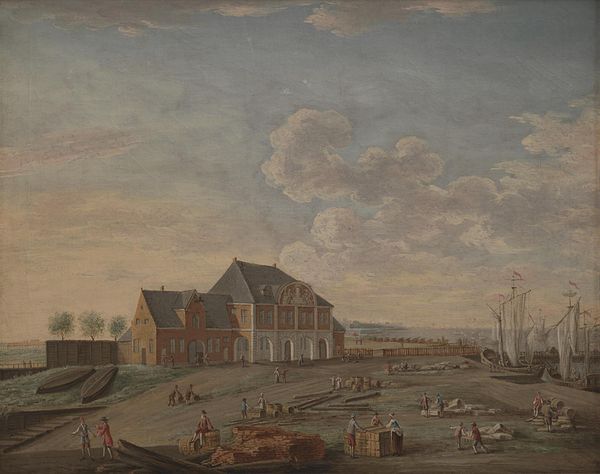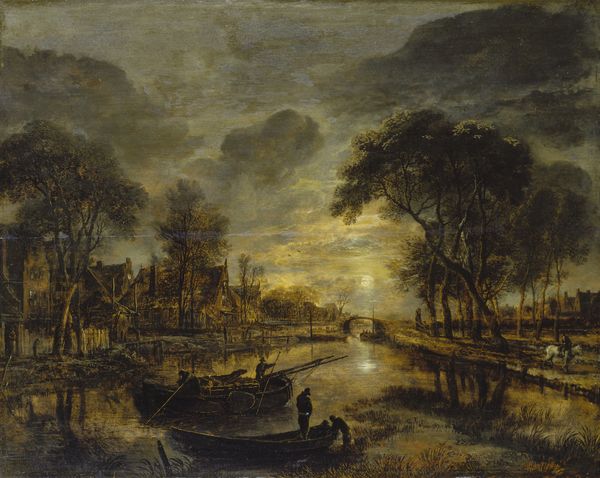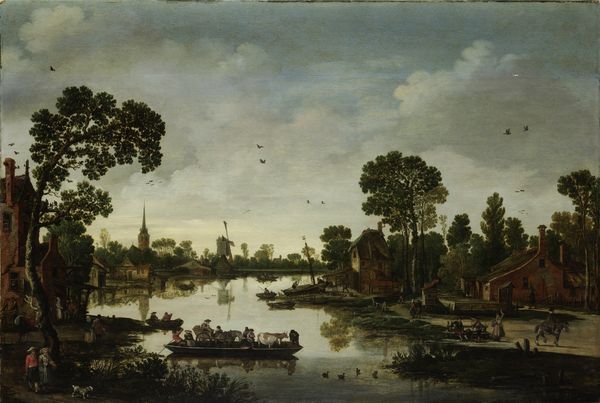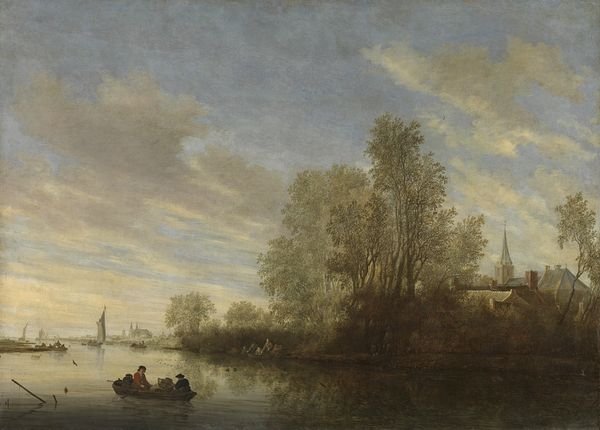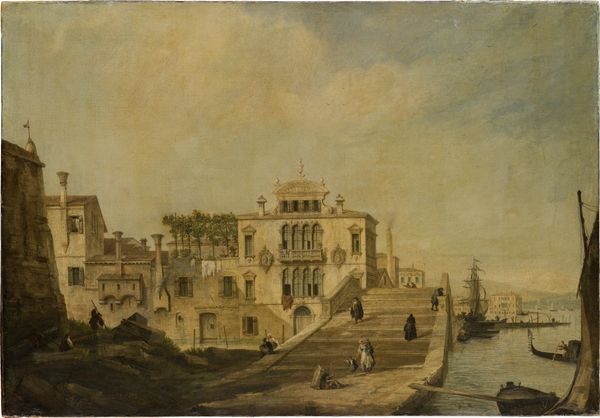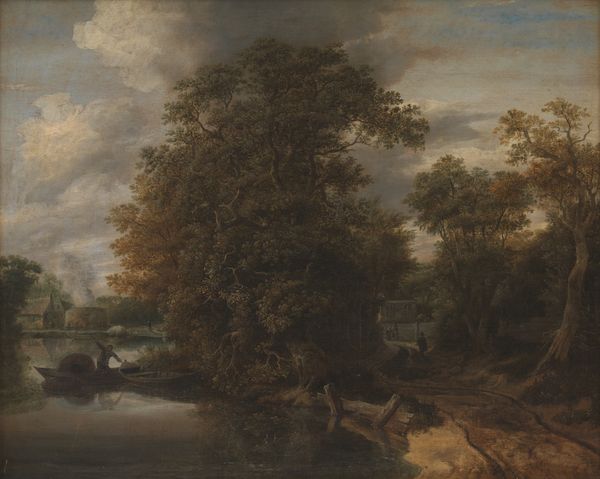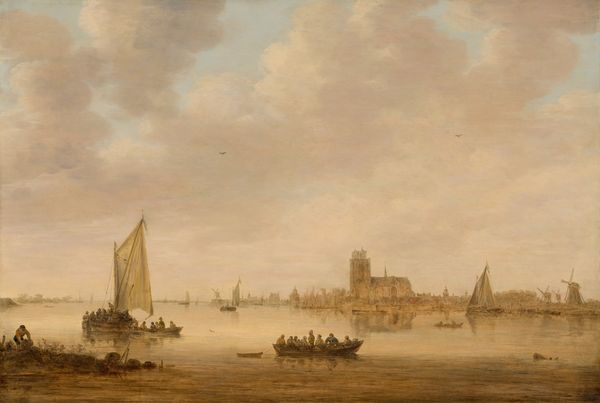
painting, oil-paint
#
narrative-art
#
baroque
#
dutch-golden-age
#
painting
#
oil-paint
#
landscape
#
oil painting
#
cityscape
#
genre-painting
Dimensions: height 33.5 cm, width 42.8 cm, thickness 1.5 cm, depth 8.5 cm
Copyright: Rijks Museum: Open Domain
Editor: So, we're looking at "The Muscovite legation visiting Amsterdam, 29 August 1697" by Abraham Storck, dating roughly from 1697 to 1708. It's an oil painting, and the thing that strikes me first is just how bustling and active it is – all these boats on the water. What stands out to you? Curator: For me, it's the painting's meticulous rendering of labor and trade. Consider the vast network required to facilitate this diplomatic visit – the shipbuilders, the sailors navigating these vessels, the artisans creating the elaborate architectural settings… It’s a portrait of a complex system of production. Editor: I see what you mean. It's not just about the fancy visitors, but everything that makes their visit possible. What about the materials themselves – the oil paint, the canvas? Curator: Precisely! Oil paint, in the 17th century, was itself a commodity, a product of global trade. Pigments sourced from different parts of the world, ground and mixed with linseed oil. The canvas too – linen woven and prepared, stretched onto a wooden frame. These materials testify to the extensive commercial networks underpinning Dutch Golden Age art. The labour of the artists to reproduce this scene through learned and perfected techniques in the dominant guild system also alludes to art's increasing market value during the baroque period. Editor: That’s fascinating! It’s like the painting is a record of economic activity as much as it is a historical event. I never thought about art this way. Curator: Absolutely! And this challenges the notion of the artist as a solitary genius. Storck was part of a workshop system, relying on assistants and engaging with the demands of the market. How does considering the material conditions of its production alter your perception of the artwork's message? Editor: It makes it feel more…real, more grounded. It connects it to the everyday lives of the people involved in its making, not just the wealthy elite depicted in the scene. Curator: Exactly! It reveals the interconnectedness of art, labor, and social life. Editor: Thanks for pointing that out, I learned a lot. This changes my perspective about art production in general.
Comments
No comments
Be the first to comment and join the conversation on the ultimate creative platform.
